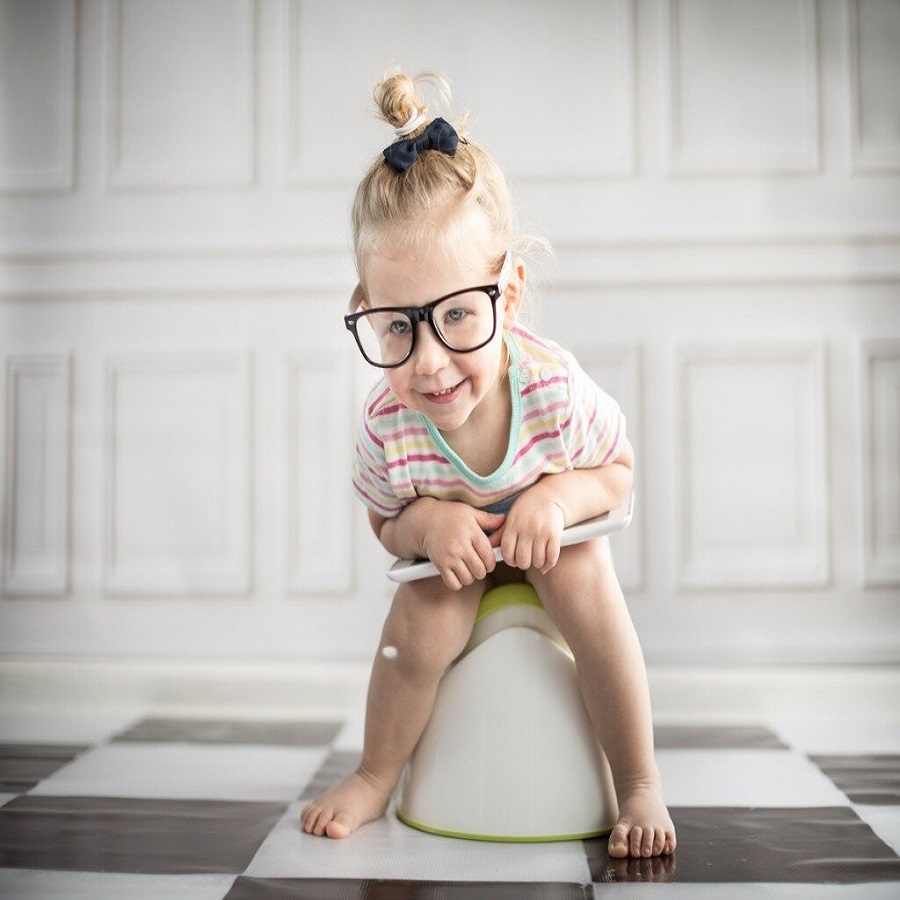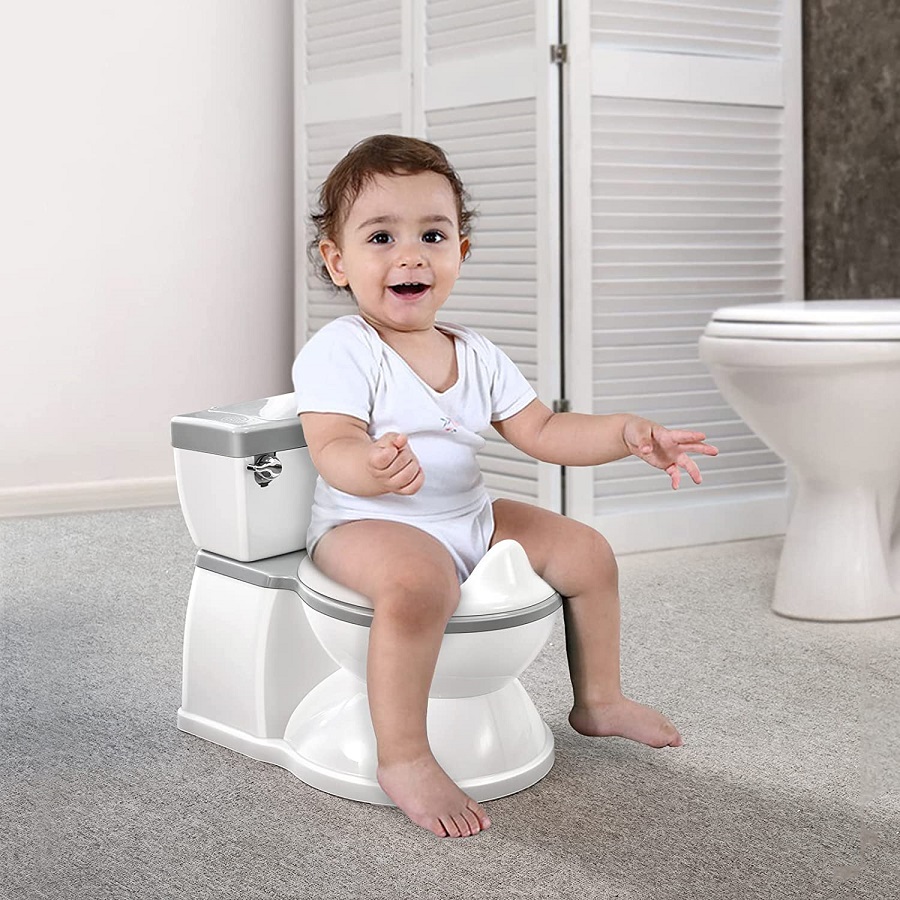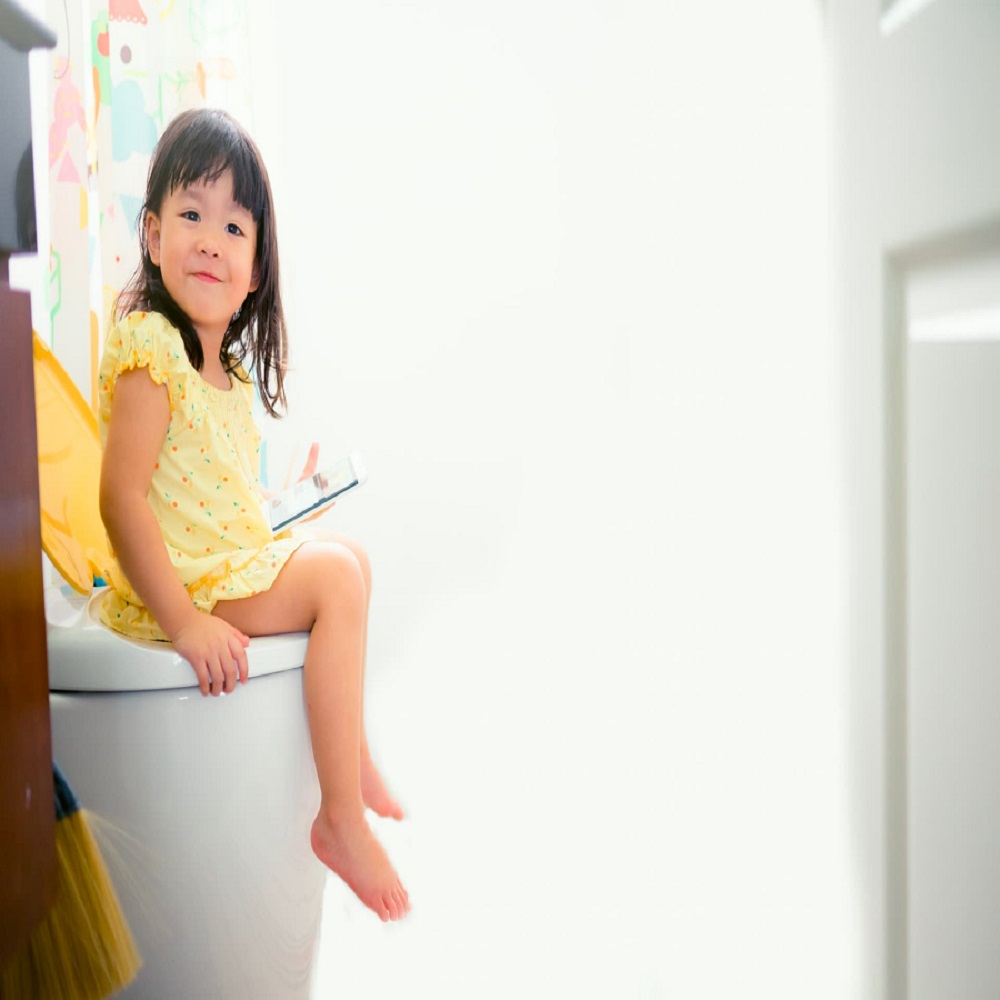Recognizing Readiness for Potty Training
Before starting toddler potty training, it’s crucial to know if your child is ready. Each child is different. There’s no set age for this big step.
Assessing Physical and Developmental Milestones
Children show signs at different times. Can your child walk and sit on their own? These are big clues. Look for their ability to follow simple instructions. This is key.
Also, staying dry for a couple of hours matters. It means they control their bladder well.
Behavioral Indicators of Preparedness
Interest in using the toilet is a strong sign. Your child might tell you when they need to go. Or they might not like wearing diapers anymore.
Potty training is a big change. If your child adapts well to new things, that’s good. Look for these signs. They help decide when to start.

Potty Training Approaches and Methods
Finding the right potty training method is crucial. It can shape your toddler’s experience and success.
Gradual vs Intensive Potty Training Techniques
Choose a gradual approach or an intensive method like the 3-day technique based on your child’s readiness and your schedule. Gradual methods spread out the training over time. Intensive methods aim for quick results, requiring full attention.
Implementing the 3-Day Potty Training Method
This method requires focus and consistency over three days. Before starting, ensure you have no distractions. Gather supplies, like a potty chair and training pants. Explain the process to your child with simple words. Reward success with praise or a sticker chart.
Comparing Potty Training Schedules
Potty training time varies for each child. Some may learn in days, others take months. Keep your plan flexible and be ready to adapt. Note your child’s progress and adjust as needed. Remember, patience is your friend during this journey.
Essential Tips for Successful Potty Training
To guide your toddler through potty training successfully, consider these key tips.
Creating a Positive Potty Training Environment
Start by making the bathroom inviting. Use bright colors or character-themed potty seats. Keep it fun with books or toys related to potty time. Always celebrate wins with a happy dance or a cheer.
Keeping Consistency Across Caregivers
Make sure everyone involved in your child’s care follows the same routine. Discuss the plan with all caregivers. Be clear about rewards, phrases, and methods used. Consistency helps your toddler learn faster.
Timing and Patience in Potty Training
Choose the right time to begin. Avoid starting during stressful periods like moving. Offer gentle reminders when it’s time to try the potty. Be patient. Potty training can take weeks or months. Stay calm during accidents, and reassure your child.

Overcoming Potty Training Challenges
Navigating the hurdles of potty training is vital for your child’s confidence and development.
Handling Accidents with Compassion
Accidents are a natural part of the learning process. Stay calm and supportive when they occur. Swiftly clean up and offer reassurance to your toddler. Emphasize that it’s okay to make mistakes while learning.
Dealing with Resistance or Regression
Your toddler may resist potty training or regress after initial success. This can be frustrating but is often temporary. Stay patient and consistent in your approach. Gently remind your child of the routine and focus on their progress, not setbacks.
When to Seek Professional Advice
If your child shows signs of distress or if there’s little progress, consult a healthcare provider. They can offer guidance and check for any underlying issues. Sometimes, a doctor’s advice can provide a fresh perspective or new strategies.
Transitioning from Diapers to Underwear
Moving from diapers to underwear is a big step. It symbolizes your child is growing up.
Celebrating Milestones and Using Incentives
Mark each success on this journey. Small rewards motivate. Praise and stickers can help a lot. Let your child pick their underwear. This excites them about the change. Remind them how proud you are.
Selecting the Right Training Pants or Underwear
Choose comfortable and fun designs. They should be easy to pull up and down. This supports independence. Soft materials prevent irritation. Absorbent fabrics help with small leaks.
Nighttime Training and Dryness
Nighttime dryness often takes longer. Be patient and use waterproof sheets. Consider training pants for sleeping at first. Limit drinks before bedtime. Celebrate dry mornings, but don’t stress about accidents.
Maintaining Potty Training Progress
Once your child starts potty training, maintaining progress is key. Be patient and ready to offer lots of support.
Continuing Support and Encouragement
Praise your toddler often for using the potty. Celebrate every success to build confidence. Keep offering help and encouragement every step of the way. Encouraging words and smiles make a big difference. Stay positive even when there are setbacks.
Monitoring and Adjusting to Child’s Needs
Watch your child closely for cues and readiness signs. Be flexible and adjust the routine as needed. If your child resists or has many accidents, it may be time for a break. Make changes based on what works best for your child. Sometimes, taking a step back helps move forward.
Ensuring Hygiene and Cleanliness Practices
Teach your child to wash hands after using the potty. Always have clean clothes ready in case of accidents. Keep the potty clean and encourage your child to help. Hygiene habits start early, so it’s important to be consistent and make it a routine.
Building a Potty Routine
Establishing a consistent potty routine can help your child feel more secure. Designate specific times throughout the day for potty breaks, such as after meals or before bedtime. This regularity not only reinforces the habit but also helps your child anticipate when it’s time to go. Use visual aids, like a potty chart, to track progress and keep your child engaged in their training journey.
Creating a Positive Environment
The potty training environment should be comfortable and inviting. Consider letting your child choose their own potty or potty seat to foster a sense of ownership. Decorate the bathroom with fun colors or characters your child loves. This can make the process feel less intimidating and more exciting. A supportive atmosphere can significantly boost your child’s willingness to use the potty.
Handling Accidents Gracefully
Accidents are a normal part of potty training. When they happen, respond with understanding and reassurance. Instead of expressing frustration, remind your child that it’s okay and part of the learning process. Encourage them to try again without making a big deal out of the setback. Your calm demeanor can help alleviate any embarrassment they may feel, fostering a more positive attitude toward potty training.

Encouraging Independence
As your child becomes more comfortable with using the potty, encourage their independence. Allow them to make choices, such as picking out their underwear or deciding when they want to go. This sense of autonomy can empower your child and enhance their confidence. Gradually reduce your involvement, allowing them to take ownership of their potty routine while still providing support as needed.
Reinforcing Good Hygiene Habits
Incorporating hygiene practices into the potty training routine is essential. Make handwashing fun by singing a song or using colorful soap. Teach your child the importance of hygiene by explaining why it matters in simple terms. Consistent reinforcement of these habits will instill a sense of responsibility and care for their health, which will serve them well beyond potty training.
Seeking Professional Guidance
If you encounter persistent challenges, don’t hesitate to seek guidance from a pediatrician or child development specialist. They can offer tailored advice and help identify any underlying issues that may be affecting your child’s progress. Remember, every child is different, and professional insight can be invaluable in navigating the potty training journey.
